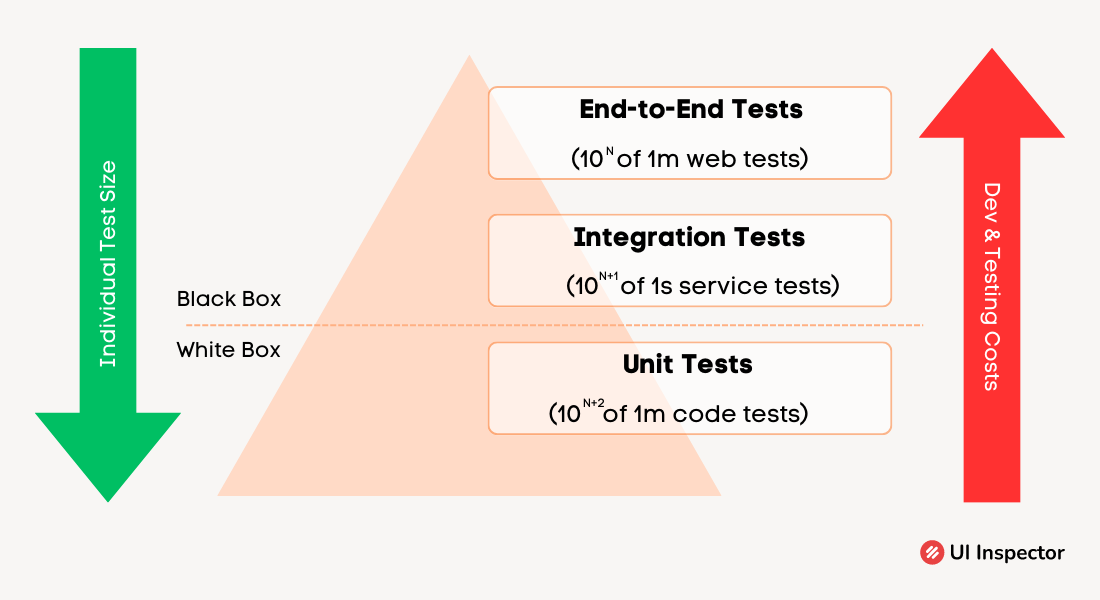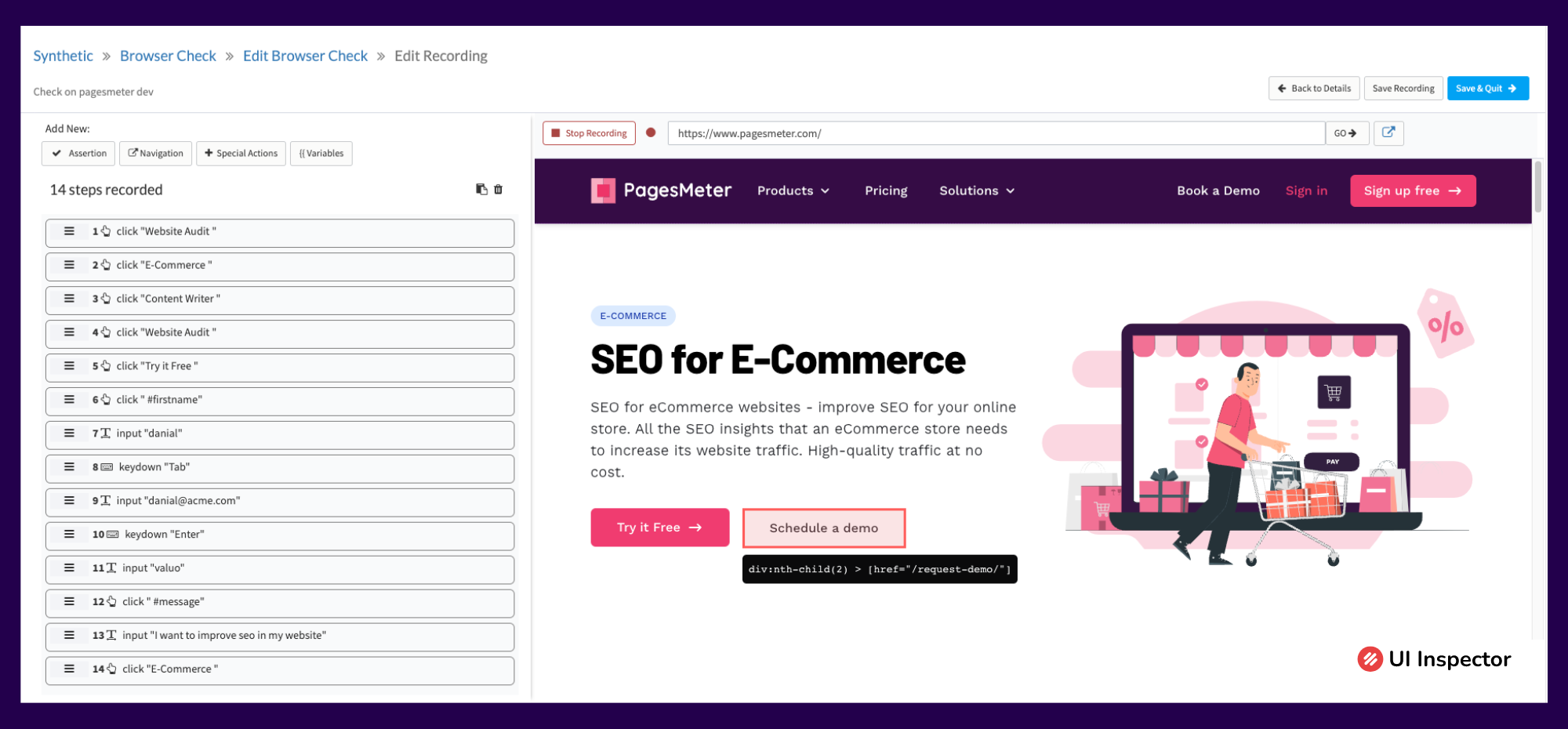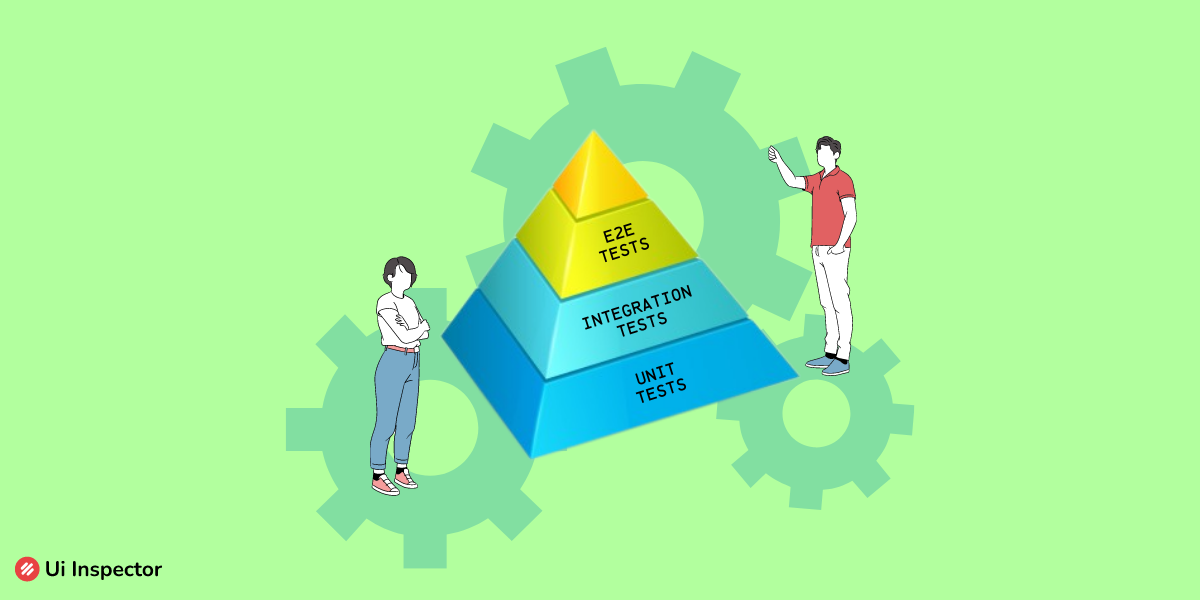The development and enhancement of the pre-existing methods are done to make the work simpler and faster. The developer's work has become more complex with the growing demand and usage of multiple software and mobile apps.
To meet the growing demand of users, simpler and faster testing methods are being found and implemented in the software development lifecycle (SDLC). But what is the need for fast testing procedures?
Usually, when the QA teams carry out a test process, it takes a lot of time because the process is manual. The intervention of automatic tests is less in the software testing process.
As a solution for this automated test pyramid was introduced to convert the testing methods to an automatic process to reduce the workload on the QA team. In this article, we will look into the details of the test automation pyramid.
Table of Contents
- Need for Automation Testing
- What is Test Automation Pyramid?
- Understanding the Layers of the Test Automation Pyramid
- Strategies for Implementing the Test Automation Pyramid
- Challenges and Considerations in Test Automation Pyramid
Need for Automation Testing
The automatic testing process is greatly increasing due to various factors. Though the QA team can do the testing process manually, with the rising demand, it is better to ensure that specific functions are automatic.
In recent days the need for test automation is increasing due to various reasons, such as,
- It saves time and increases the productivity of the overall testing process.
- The money required for manpower can be reduced with automatic test cases.
- The test results obtained are more accurate compared to manual test results.
- The chances of error are very less if the tests are automatic.
- The results and data obtained contains high clarity and are easy to interpret.
- Tasks and goals that cannot be taken care of by manual testing are listed under automatic testing to complete it faster.
Due to these various advantages, changing automatic test procedures wherever possible in your digital product is recommended. Once implemented, no special care is required unless there is an error.
What is Test Automation Pyramid?
Testing strategies also progressed as the software development life cycle (SDLC) evolved. One influential testing strategy is the test automation pyramid, particularly applicable to digital products like mobile applications.
Traditionally, certain testing procedures had to be conducted manually. However, the test automation pyramid provides a framework to identify which testing processes are suitable for automation and which require manual testing.
The test automation pyramid comprises different levels that outline the breakdown of tests suitable for automation and the testing processes within each level. It emphasizes the optimal distribution of test cases across these levels.
Beyond automation guidance, the test automation pyramid offers a reliable blueprint for conducting comprehensive testing of software products. This outline is a valuable resource for developers and QA teams, aiding them in performing testing processes efficiently and with minimal disruptions.
Understanding the Layers of the Test Automation Pyramid
Every level in the test automation pyramid can incorporate one method of the testing process. As the pyramid goes up, the complexity of performing tests also increases and finally, it reaches the manal testing region.
As the level increases, the number of test cases that can be performed automatically decreases, but the cost of developing and testing increases as the level decreases. Let’s look into the testing methods in a test automation pyramid.
Best Practices for Each Layer of the Test Automation Pyramid
- Unit Testing Best Practices
- Integration Testing Best Practices
- UI/End-to-End Testing Best Practices

a) Unit tests
Unit tests are the basic and initial testing process in any software application. They are quite easy to perform and every unit test focuses on individual codes. By implementing unit tests, every part of the application is entirely tested.
Though a separate test case must be constructed for every code in the software, it is easy compared to other testing methods. The developers who developed the code can easily construct a unit test case.
As mentioned earlier, the unit test case is the base of the test automation pyramid, so the number of developed test cases is large. Every test case has its own purpose in the testing process and none is left unused.
Since every code in the software is implemented with a unit test case, it is easy to detect and fix bugs quickly. While the other testing methods focus on different aspects, the only job of unit tests is to care for one particular code.
Best Practices
- Test a single unit of code in isolation without external dependencies.
- Use meaningful and descriptive test cases with clear assertions.
- Cover different scenarios, including edge cases and boundary conditions.
- Employ code coverage tools to ensure adequate test coverage.
- Run unit tests frequently, ideally as part of the development process or during CI/CD pipelines.
- Refactor and update unit tests alongside code changes to maintain their effectiveness.
- Aim for fast and reliable execution of unit tests to enable quick feedback.
b) Integration Tests
So the level of the test automation pyramid is controlled by integration tests. After ensuring the correctness in the construction of code, the next step is to move towards monitoring the performance of the software.
To ensure the performance of the software, it is important to check if the software interacts properly with the API and other databases. If not, then integration test cases take care of this process.
Integration tests are implemented at interfaces of the software or external regions to ensure proper communication between the interfaces and other services of the software.
One important aspect of integration is to create a suitable test environment because it interacts with other services and features. The need for a test environment is not required in unit tests. On creating a suitable test environment, the integration tests can run automatically.
These tests are a bit more complex than unit tests, and fewer test cases are implemented in regions where there is an interface. The results obtained focus on the overall performance of the software.
Best Practices
- Identify critical integration points and test the interaction between components.
- Ensure proper setup and teardown of test environments to avoid interference between tests.
- Use test doubles (mocks, stubs) to isolate components that are not the focus of the current test.
- Consider testing different integration scenarios, such as error handling and data consistency.
- Test various communication protocols, APIs, and external services for seamless integration.
- Validate correct data flow and behavior across integrated components.
- Include integration tests as part of the continuous integration process to catch integration issues early.
c) End-to-End tests
The final layer of the test automation pyramid is end-to-end tests. Since this is at the top layer, the testing process is also a bit more complicated than other testing processes and takes longer to provide the results.
Unlike other testing methods, end-to-end tests don’t focus on certain aspects of the software. These test cases are intended to monitor the entire application and check the functionality entirely.
The results obtained from end-to-end tests show how well the software functions and what changes can be made to ensure customer retention.
End-to-end tests are implemented at the UI of the software. This method also required a proper testing environment like the integration testing process. Constructing a test environment is very crucial for end-to-end tests.
One major advantage of end-to-end testing is that the test case can have multiple features and dependencies integrated into it. When unit testing requires separate test cases for every code, end-to-end test cases can incorporate everything under a single roof.
Best Practices
- Define clear and realistic test scenarios that mimic real user interactions.
- Prioritize test cases that cover critical user workflows and business processes.
- Leverage automation frameworks and tools suitable for UI testing, such as Selenium or Cypress.
- Maintain reliable test data and ensure proper setup of test environments.
- Implement proper synchronization and waiting mechanisms to handle asynchronous operations.
- Use robust and maintainable locators to interact with UI elements.
- Perform regular UI test maintenance and updates to accommodate application changes.
- Run UI tests on various browsers and devices to ensure cross-compatibility.
- Monitor test execution and investigate failures promptly to maintain test reliability.
Strategies for Implementing the Test Automation Pyramid
The Test Automation Pyramid is a strategy for structuring and prioritizing test automation efforts in a software development project. It promotes a balanced approach to test automation by dividing tests into three layers: unit tests, service/API tests, and UI tests.
Here are some strategies for implementing the Test Automation Pyramid:
- Understand the application architecture: Gain a deep understanding of the application's architecture and identify the different layers/components involved. This knowledge will help you determine which types of tests should be prioritized at each layer.
- Focus on unit tests: The pyramid's base consists of unit tests, typically written by developers. Unit tests are fast, isolated, and validate the behavior of individual code units (functions, classes, methods). Encourage developers to write comprehensive unit tests as part of their development process.
- Automate service/API tests: The pyramid's middle layer focuses on service/API tests. These tests validate the interactions between various components of the system, such as web services, APIs, or microservices. Use tools like REST-assured, Postman, or SoapUI to automate these tests. Prioritize testing critical API endpoints and important integration points.
- Use UI tests selectively: The top layer of the pyramid involves UI tests, which validate the application's behavior through its user interface. UI tests are slower, more brittle, and require maintenance due to UI changes. Use UI automation tools like Selenium or Cypress to automate these tests. However, it's important to be selective and focus on high-value, end-to-end scenarios rather than attempting to automate every UI interaction.
- Prioritize test coverage: Focus your automation efforts on high-risk and critical areas of the application. Identify the most important features, user flows, and business processes, and ensure they are thoroughly tested across the different layers of the pyramid.
- Maintain a stable and reliable test suite: Regularly review and update your test suite to ensure it remains relevant and reliable. Eliminate redundant, flaky, or low-value tests. Maintain good test hygiene, such as cleaning up test data and managing test dependencies.
- Continuous integration and delivery: Integrate your automated tests into the continuous integration and delivery (CI/CD) pipeline. Automate the execution of tests on each code commit or deployment to catch issues early in the development cycle. This helps provide fast feedback and ensures that tests are regularly run and kept up to date.
- Collaborate and communicate: Test automation efforts require collaboration between developers, testers, and other stakeholders. Foster open communication, share knowledge, and involve all team members in the test automation process. This will help align priorities, address challenges, and ensure that test automation is integral to the development workflow.
Challenges and Considerations in Test Automation Pyramid
The Test Automation Pyramid presents a structured approach to prioritize and implement test automation. However, there are challenges and considerations to be mindful of during its implementation:
- Test Maintenance: As automated tests increase, test maintenance becomes a significant challenge. Regular updates and maintenance are necessary to keep tests aligned with application changes.
- Test Stability: UI tests can be fragile and prone to failure due to UI modifications or timing issues. Robust synchronization and wait strategies can improve test stability.
- Test Data Management: Proper management of test data, including availability and cleanliness, is vital for accurate and representative testing.
- Test Execution Time: As tests move up the pyramid, execution time increases. Strategies like parallel execution or selective test suite execution can optimize test execution time.
- Skill Set and Collaboration: Different layers of the pyramid may require diverse skill sets. Collaboration and upskilling the team are essential for successful implementation.
- Test Coverage and Prioritization: Balancing test coverage across layers and prioritizing high-risk areas ensure effective testing.
- Continuous Integration and Deployment: Integrating tests into the CI/CD pipeline requires careful management of execution, environments, and dependencies.
- Evolving Architecture: Test automation strategies must adapt to evolving application architectures, necessitating regular reassessment and updates.
Conclusion
The optimization of the testing process is now growing because of the high demand for the use of websites, software, and mobile applications. It is impossible to manually test every aspect of the code or software because it is quite tedious.
The test automation pyramid is one tool or method that can be incorporated for testing. You can quickly complete the test process using all information and data from the pyramid.
Implementing a test automation pyramid will make dividing the entire test process into various layers easy, and execution will be fast. Understand about test automation pyramid and get started with the process.
Simplify Testing and Enhance Application Quality
Ui Inspector is a comprehensive no-code test automation platform designed to streamline the testing process and elevate the quality of your applications. With its wide range of powerful features, UI Inspector empowers developers and QA teams to efficiently tackle common testing challenges.

Ensure seamless functionality and consistent user experience across multiple browsers. Identify and resolve API issues early in the development process, to reduce the risk of costly failures in production.
Minimize critical bugs that occur in production, and save time, effort, and resources by reducing post-release bug fixes and patches.
Sign up now for UI Inspector's 14-day free trial offer and experience the power of its features to discover limitless possibilities!


